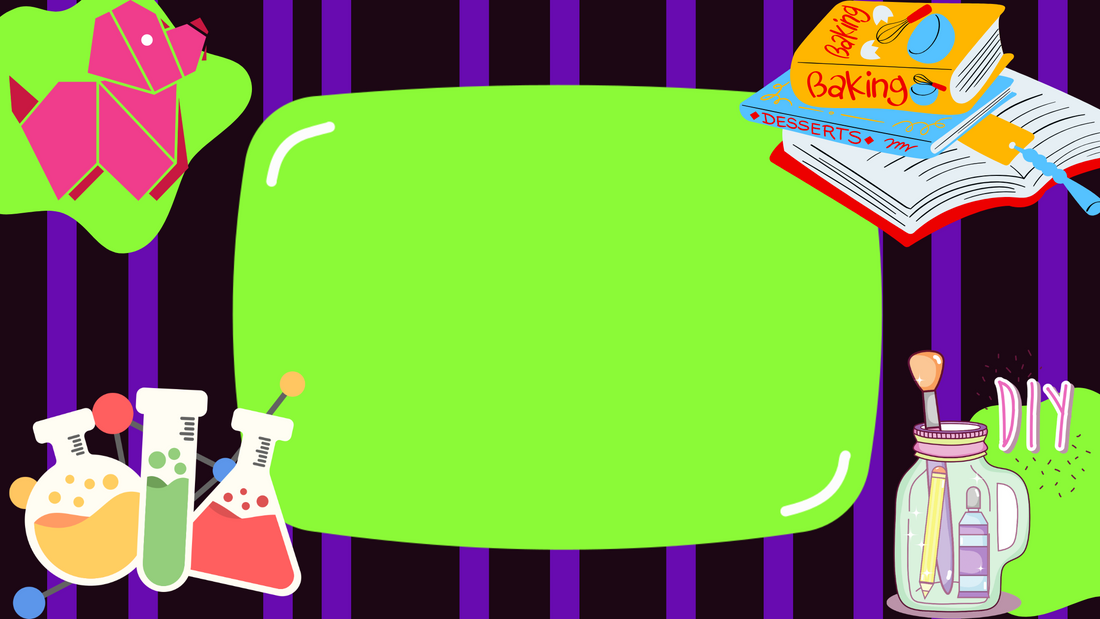As an affiliate, I earn from qualifying purchases, but this doesn't affect the reviews or recommendations—your trust is important to me!
Creating Your Own Soda Bottle Rocket A STEM Experiment

Today, We're Making:
- Building a DIY Soda Bottle Rocket (STEM Experiment)
- Building a Solar System Model: Utilize this day to create a model of our solar system, depicting planets in relation to the sun. Kids can utilize craft materials like foam balls, paints, and LEDs to symbolize sun's light. They can also add the given date to demonstrate Earth's position on that day.
- DIY Sundial: This is a project that teaches kids about the passage of time and how it was tracked in the ancient times. Find a sunny spot in your garden or yard,stick in a tall.
Imagine launching your very own homemade rocket into the crisp, blue sky on a sunny day.
Picture your kid's beaming, wide-eyed excitement as the DIY Soda Bottle Rocket, a fun yet educational STEM experiment, soars high above your yard. What might sound like rocket science is actually an easy science experiment you can conduct right at home. This bottled blast-off is not just a thrilling outdoor activity but also a hands-on physics experiment that offers an excellent opportunity for hands-on, experiential learning.
In this blog post, we are going to explore the design, building, and launching of your DIY rocket in a way that's kid-friendly and captures the exciting spirit of STEM education.
So strap in! We’re about to dive into the world of DIY STEM projects and reveal how you can make science a thrilling adventure.
Start With The Basics: Gather Your Rocket Materials
Building a DIY Soda Bottle Rocket is a stimulating way to initiate your kids into STEM education. It's time to roll up your sleeves and get crafting a rocket that's set to impress. You'll be surprised at the simplicity of this project; all the materials needed are likely already lying around at home.
- An empty 2-litre soda bottle
- Cardboard to make fins
- Duct tape or masking tape
- A cork that fits the soda bottle's mouth
- A bicycle pump with a needle nozzle
This interactive bit of rocket science at first might look like a basic craft, but nothing can be far from the truth. These humble supplies are soon to become the launching pad for your child's imagination, and their love for science!
Rocket Assembly: Harnessing the Power of Pressure
Let's take a look at the principle that's going to make our Soda Bottle Rocket take flight. It's all about pressure! Rocket Propulsion actually has everything to do with Newton's third law - for every action, there's an equal and opposite reaction. Fill the soda bottle about one-third full of water, insert the cork tightly into the mouth of the bottle, and then inflate it using a bicycle pump. The air pressure in the bottle builds up, seeking a way out that the water and the cork are blocking. When the pressure gets strong enough, it forces the cork out and shoots the water downwards at high speed which propels the bottle 'rocket' upwards! Isn't physics experiments like these just too cool?
Making It Yours: Personalise Your Rocket Design
The best thing about DIY STEM Projects is the freedom they offer. The standard soda bottle rocket can transform into a spaceship, an alien craft, or a rainbow bullet – whatever fuels your kid’s imagination. Encourage your young astronauts to go wild with paints, stickers, or glitters while crafting a rocket. Make the rocket fins big or small, colour them creatively or leave them as is, the choice is all yours. Remember, the design isn't just for aesthetics, it impacts the physics of rocketry too! The size and shape of the fins can affect the stability and direction of the rocket's flight, turning this fun science experiment into a valuable opportunity for learning.
Ready, Set, Launch! An Outdoor Science Activity You Can’t Miss
Now that the rocket is assembled and decorated, it's time for the real fun to begin. Head to your backyard or local park for a memorable bottle rocket launch. Place your homemade rocket on a flat, open space, pump air into it, stand back, and get ready to see it soar into the sky! This epic climax of your DIY Rocket STEM experiment isn't just exciting but also offers teachable moments. Discuss with your kids why the rocket launched, its path of flight, and how gravity eventually brings it back down. Don't forget to capture this thrilling moment; you're in for some wide-eyed wonder and genuine joy.
People often say science isn't meant to be played with. But we say, why not? Especially when it gives the little ones a glimpse into the mechanics of flight, pressure experiments, and Newton's laws in a practical, hands-on way. With a homemade rocket, the sky is truly the limit! Get ready to astound children and adults alike with your soda bottle rocket - a simple science project with an explosive result.
Remember, safety comes first, so make sure children are supervised at all times during this exciting STEM experiment. Happy rocket building!

So there you have it, a powerful science experiment disguised as unforgettable fun
Not only does the DIY Soda Bottle Rocket launch your children's interest in science, but it also propels their imagination and creativity to new heights. It offers a unique blend of physics principles, hands-on craftsmanship, and thrilling excitement. Who would have thought that empty soda bottles could transform into such meaningful learning experiences?
Don't delay, gather up those supplies, roll up those sleeves, and get ready for an incredible day of DIY rocket science. Ignite passion for STEM education, one launch at a time. Remember, not all learning happens within four walls. Sometimes, it happens when we look long enough at the sky and dare to soar.

You May Also Like These:
Project: Building a Solar System Model
Materials Needed:
- Styrofoam balls of different sizes to represent different planets.
- Acrylic paint in various colors (blue, red, green, yellow, white, etc.)
- Paint brushes of different sizes.
- Long wooden skewers for painting and drying planets.
- String or fishing line for hanging planets.
- A craft knife (adults only).
- Black spray paint to paint your display board representing space.
- A large cardboard for backdrop or base.
- A hot glue gun or super glue to attach the planets to the display board.
Instructions:
- Gather Your Materials: Make sure you have all the materials listed above before you begin creating your model.
- Paint the Planets: Use the acrylic paint to color your styrofoam balls to match the planets. For example, Earth could be painted blue and green, Mars red and so on. Allow them to dry.
- Prepare the Backdrop: While the planets are drying, spray paint your cardboard backdrop black to represent space. Allow it to dry.
- Arrange the Planets: Once everything is dry, you can start arranging the planets on your backdrop. Start from the center with the Sun and go outwards to Neptune.
- Hang the Planets: Use string or fishing line and a hot glue gun to attach your planets to the backdrop. Make sure to let the glue dry completely before you hang your solar system model.
- Review: Once your solar system is hanging, go through the names and order of planets with your child to reinforce what they've learned during the project.
Note:
Adult supervision and assistance will be necessary throughout the process especially while handling paint, a craft knife, or hot glue gun.
STEM Project: Homemade Lava Lamps
Materials:- Clear glass or plastic container
- Vegetable oil or clear baby oil
- Water
- Food coloring (any color)
- Effervescent tablet (like Alka-Seltzer)
Instructions:
- Fill the Container: Fill your container about 3/4 full with oil.
- Add Water: Pour water into the container until it is nearly full.
- Add Color: Add a few drops of food coloring. The coloring will pass through the oil and color the water.
- Drop in the Effervescent Tablet: Break the effervescent tablet into a few pieces and drop them into the container.
- Observe: Watch as the colorful bubbly blobs float to the top!
This project demonstrates the concept of liquid density and the reaction between the effervescent tablet and water. Not only is it educational, but it's also fun to watch!
STEM Project: DIY Solar Oven
Materials:- Cardboard pizza box
- Aluminum foil
- Clear plastic wrap
- Black construction paper
- Tape
- Stick or straw to prop open the lid
Instructions:
- Prepare the Lid: Cut a flap in the lid of the pizza box, leaving a border of about 1 inch on the sides and front.
- Cover with Foil: Cover the inside of the flap and the inside of the box with aluminum foil. Smooth out any wrinkles and secure it with tape.
- Add Plastic: Cover the opening created by the flap with clear plastic wrap, taping it to seal the opening.
- Insert Black Paper: Place the black construction paper in the bottom of the box.
- Assembly: Prop the flap open using a stick or straw. Your solar oven is ready!
This project teaches kids about the power of solar energy. They can place a small treat, like a piece of chocolate, inside the oven and watch it melt from the trapped heat.
Project 1: Homemade Lava Lamp
Ingredients:- 1 clear glass or plastic container
- Vegetable Oil
- Water
- Food coloring (any color of your choice)
- Alka-Seltzer tablets
- Fill the container three-fourths full with vegetable oil.
- Fill the rest of the container with water but leave some space at the top.
- Add several drops of food coloring (Choose any color you prefer). It's important to note that the food coloring will only color the water and not the oil.
- Drop an Alka-Seltzer tablet into the container and observe the chemical reaction. Explain to your children that the reaction creates gas bubbles which travel upwards through the oil creating a lava lamp effect.
Project 2: Crystal Snowflakes
Ingredients:- White pipe cleaners
- String
- Wide-mouth jar
- Borax powder
- Boiling water
- Pencil or a popsicle stick
- Create a snowflake shape with the pipe cleaners. You can twist the pipe cleaners together to create this shape.
- Tie a string to the snowflake then to the pencil or popsicle stick. The string should be long enough so that your snowflake can perfectly hang in the jar without touching its sides or bottom.
- Boil enough water to fill the jar.
- Add borax powder to the boiling water. Stir it until no more borax can dissolve.
- Insert your snowflake and let it sit overnight. The next day, you should have a beautiful crystallized snowflake.
DIY Sundial STEM Project
Objective: Teach your child about the passage of time and how it was tracked in the ancient days with our DIY sundial project. Alongside understanding the basics of astronomy, this project will offer a practical lesson in how the position of the sun in the sky changes over time.
Materials Needed:
- Long stick, ruler or dowel (about 12 inches long)
- Flat, open area in your garden or yard with good sunlight throughout the day
- 12 small stones, pebbles or markers
- Compass (optional)
Instructions:
Step 1: Identifying the Ideal Location:
Find a flat, open area in your garden or yard that receives sunlight throughout the day. Make sure there are no obstructions like trees or buildings that could block the sunlight.
Step 2: Placing the Sundial:
Press the stick, ruler or dowel into the ground at your chosen spot. It should stand upright and not lean or wobble. This will serve as your sundial's 'gnomon,' the part of the sundial that casts the shadow.
Step 3: Recording Time:
Record the end of the stick's shadow hourly throughout the day. Mark the position of the shadow at each hour using your stones, pebbles or markers. You'll notice the shadow changes position as time passes.
Step 4: Marking the Hour Points:
Each stone should represent a different hour of the daylight. Make sure you note down which stone represents which time. For example, the first stone could be 7:00 AM, the next 8:00 AM, and so on.
Step 5: Reusing Your Sundial:
Your sundial can be used over and over again. Teach your child how to use it to tell the time and discuss how this method was employed in ancient times!
Important Note:
Remember that this is a basic sundial and factors like Daylight Saving Time and the Earth's axial tilt can create changes or inaccuracies. This sundial should be used as a fun educational tool rather than a precise clock.
STEM Project: Stick in a Tall Structure
Materials Needed:
- Sticks (20-30 pieces)
- String or Rubber Bands
- Ruler or Tape Measure
Instructions:
-
Gather Your Materials
You will need approximately 20-30 sticks. These can be twigs found in your backyard or small wooden dowels. You will also require string or rubber bands to help connect the sticks together, and a ruler or tape measure to ensure accuracy.
-
Plan Your Structure
Think about what kind of structure you want to build. It could be a simple tower or a more complex pyramid or cube. Consider factors like the height and the base stability of your structure.
-
Start Building
Start by building your base. This is the most important part because it will determine the stability of your entire structure. Then, build up from the base, adding levels to achieve your desired height.
-
Measure Your Structure
Use your ruler or measuring tape to measure the height of your structure. How tall were you able to build it?
-
Experiment
Try building different types of structures and observe which ones are more stable and can achieve greater heights. What differences do you notice in the construction and stability of different types of structures?



























